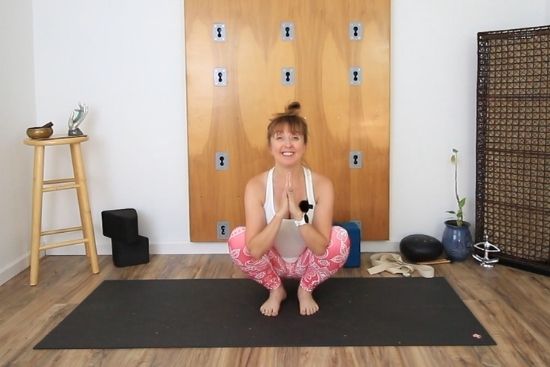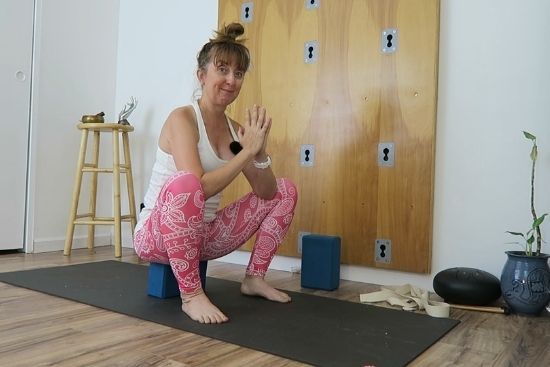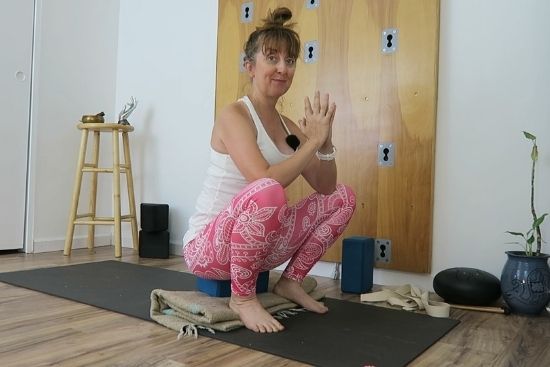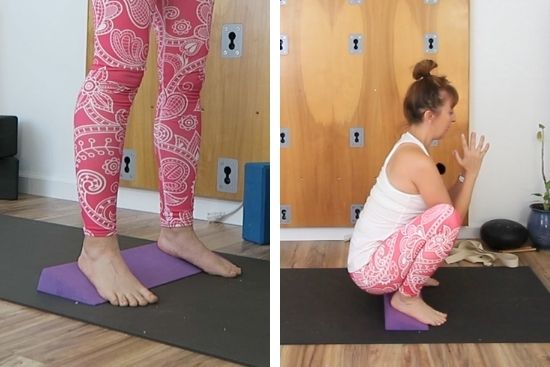Recently I created a yoga video for my Patreon community focused around malasana, garland pose, and it’s single leg variation the pistol squat. This deep yoga squat can be a challenging pose for many as it requires deep hip, knee and ankle flexion. As such, I thought I’d do a short Malasana tutorial, along with some modifications for the pose.
If you can’t view the embedded video above, you can view the video on YouTube. Maybe add it to a playlist? Above all, remember to subscribe to my channel. New videos are uploaded every week. However, for exclusive longer format videos sign up for my Patreon community. Patrons also get early access to all my videos, along with lots of other benefits.
Malasana Tutorial
There are many ways to transition into Malasana, in the video, I share coming into the pose from forward fold. This allows us the opportunity to assess the range of movement in the ankles and has less strain on the knees. From uttanasana, bend the knees a lot and send your butt towards the floor. But don’t sit ON the floor, simply ‘sit’ in the deep “ass-to-grass” squat. The hands traditionally come to rest at the heart in Anjali Mudra with the elbows inside the knees.

Notice:
- Are your feet connected to the floor?
- Is there a balance of effort and ease?
- How wide apart are your feet?
- Do your joints feel ok? – knees ankles?
- Are there any areas of the body screaming for mercy?
- How long can you hold the pose?
Garland pose is often a challenge for many, and yet it’s something we’re all inherently made to do. Many cultures Worldwide spend a LOT of time in this position. In fact, look at most infants and they are in this position a lot. So biomechanically, the function is there. The problem is our modern lives and behaviors alter our bodies and cause tightness and restriction. So, let’s discuss how to modify Malasana and make it more personalized to YOUR body.
Malasana Modifications
The main issue people have with this pose is it’s simply too much for the hips and knees. Firstly, take the feet wider apart and see if that helps. Secondly, try using a yoga block to support your pelvis.

While there is a variation of this pose is a toe-stand, the pose usually has the feet connected to the floor. However, this requires a lot of ankle mobility, something many of us are lacking. So if you’re feet can’t stay connected to the floor then use support under your heels. For this, you could use a folded blanket, shown below.

An alternative to the blanket is a prop I love and use often with my clients and that is a yoga wedge. You can read my previous post, and video, about this amazing yoga prop but it’s a great way of making malasana more comfortable and providing support for the feet. If I am doing a malasana tutorial in class I will always offer this for anyone with ankle mobility issues.

While toe stand malasana is a valid option, for anyone with tight calves or plantar fasciitis it could aggravate the problem area. Instead work on releasing the calves and/or feet in your warm up, along with giving the heels some support.
Like this post? Give it a PIN!

Want more yoga?
If you’re looking for real yoga for real bodies, consider joining my Patreon. Each month I release two yoga classes exclusively for my Patreon community. Other ways to find more yoga with me are signing up for my 7-day yoga challenge, or subscribing to my YouTube channel.
Questions
- Can you sit into a deep yoga squat?
- Do your heels lift off the floor?
- What other issues, if any, do you have in this pose?
 Yoga for Energy and Focus 15-minute flow
Yoga for Energy and Focus 15-minute flow